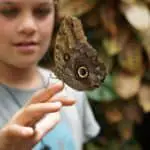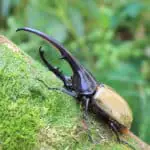Imagine a pet that doesn’t bark, scratch, sting, or smell. Enter the stick insect – the silent, odorless companion every beginner dreams of. These charming creatures are not only easy to care for but also incredibly gentle. They don’t bite, sting, or pose any danger, making them a stress-free pet for kids and adults alike.
Stick insects are perfect for families dipping their toes into the world of exotic pets. They’re fascinating to watch, requiring minimal maintenance, and serve as an excellent introduction to pet care responsibilities. Plus, their quirky behavior and unique appearance make them endlessly entertaining.
- Stick Insects: Nature’s Masters of Camouflage
- Getting Started: How to Find and Keep Your First Stick Insect
- Choosing the Perfect Home for Your Stick Insect
- The Right Environment: Temperature, Humidity, and Light
- What’s on the Menu? Feeding Your Stick Insect
- Molting Matters: What You Need to Know
- Handling Stick Insects: Dos and Don’ts
- Breeding Stick Insects
- Caring for Stick Insect Eggs and Nymphs
- FAQs and Troubleshooting for Stick Insect Owners
- Recommended Supplies for Your Stick Insects
Stick Insects: Nature’s Masters of Camouflage
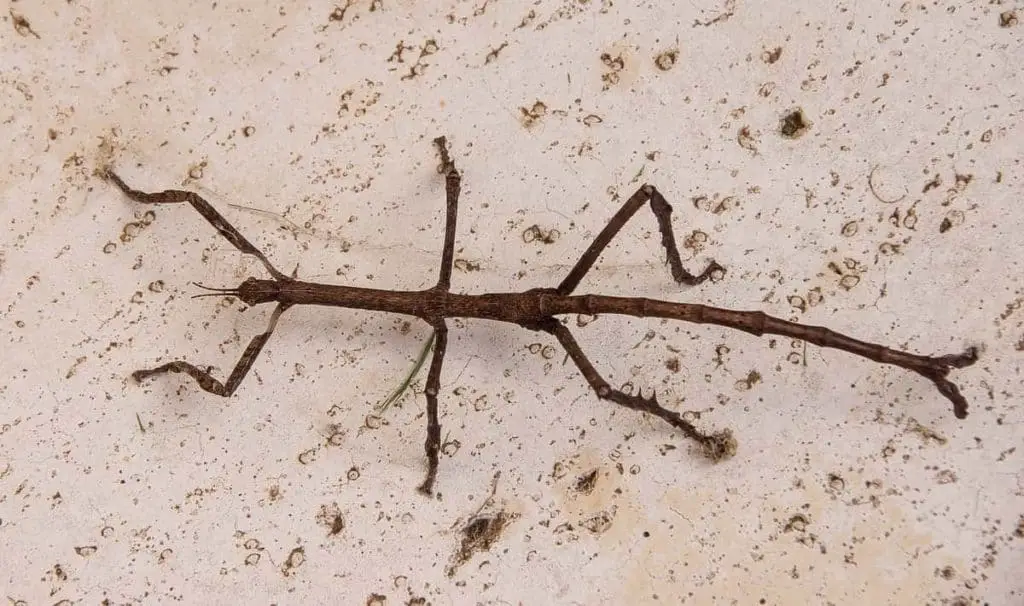
What Are Stick Insects?
Stick insects, also called walking sticks or twig insects, are the ultimate masters of disguise. They resemble, you guessed it, sticks! This extraordinary adaptation helps them blend seamlessly into their environment. Found mainly in tropical regions, stick insects are one of nature’s most convincing impersonators.
Record-Breaking Stick Insects: The Longest Bugs on Earth
Did you know the world’s longest insect is a stick insect? Meet Phobaeticus chani, a species from Borneo that holds the Guinness World Record with a jaw-dropping body length of 355 mm. Talk about a big bug!
The Art of Disappearing: How Stick Insects Evade Predators
Stick insects don’t just look like sticks – they act like them too. These stealthy creatures can remain motionless for hours, making them nearly invisible to predators. Some species can even change color to regulate their body temperature, adding another layer to their incredible camouflage skills.
Getting Started: How to Find and Keep Your First Stick Insect
Where to Get a Stick Insect
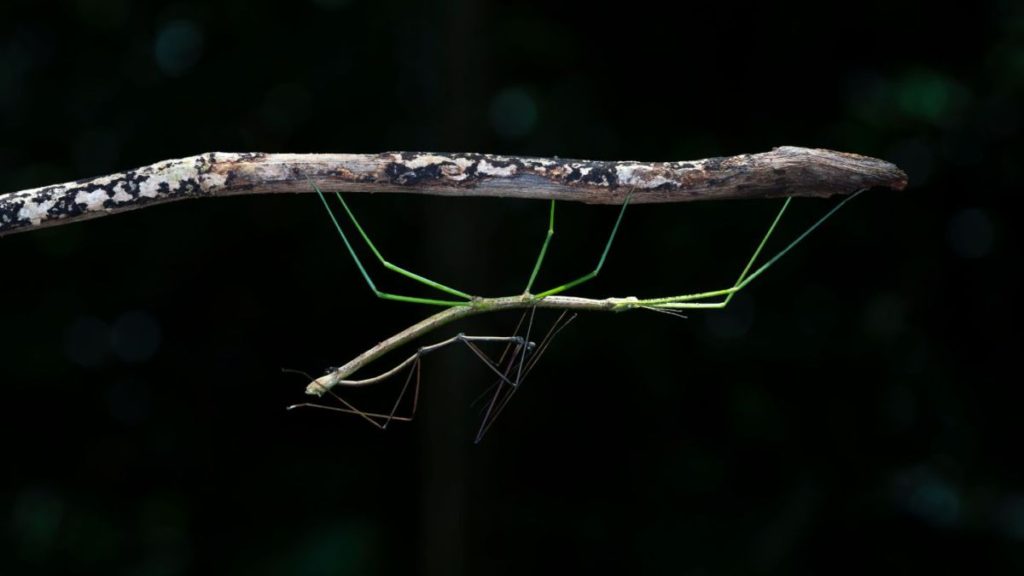
Buy or Catch: The Pros and Cons
If you’re thinking of catching one in the wild, good luck! Stick insects are so well-camouflaged that spotting them is like finding a needle in a haystack. Your best bet is to visit a local pet store or order one online.
Online Shopping? Handle with Care!
When purchasing stick insects online, keep in mind they’re delicate creatures. Shipping stress can be fatal, so check with the seller about precautions to ensure safe transportation.
Legal Stuff: Permits and Native Species
Before bringing home your stick insect, check your local regulations. Some places require permits to keep or import exotic pets. Whenever possible, opt for native species to minimize environmental impact and avoid legal headaches.
Choosing the Perfect Home for Your Stick Insect
The Ideal Enclosure: Size and Setup
Stick insects thrive in tall, transparent enclosures with excellent ventilation. As a rule of thumb, the tank should be at least four times the length of your stick insect and three times as tall. This gives them enough space to move around and molt comfortably.
Why Height Matters: A Molting Must-Have
Molting is a crucial process for stick insects as they grow. They hang upside down to shed their old skin, so a tall enclosure is essential. Without enough height, they might not molt properly, which can lead to deformities or even death.
Twigs and Mesh Lids: Building a Bug-Friendly Habitat
Decorate the enclosure with twigs and branches to mimic a natural environment. These also provide climbing spots and hiding places for your stick insect. A mesh lid ensures proper ventilation and prevents escape while offering a sturdy surface for molting.
The Right Environment: Temperature, Humidity, and Light
Creating a Cozy Home
What’s the Perfect Temperature?
Stick insects thrive in temperatures between 68–77°F (20–25°C). These tropical bugs love warmth, so keep them away from cold drafts. Some species might have specific temperature needs, so always research your particular species for the best care.
Humidity Hacks: Spraying for Success
Stick insects need a moist environment to stay healthy and molt successfully. A quick spray from a garden sprayer once a day keeps the enclosure humid. Bonus: those water droplets on leaves aren’t just for looks—they’re hydration stations for your stick insects.
Night Owls: Stick Insects and Lighting Tips
Stick insects are nocturnal creatures, most active when the lights go out. Don’t expose them to harsh direct light—it’s not their vibe. While they don’t require complete darkness, an aquarium light works well for observation without disturbing their natural behavior.
What’s on the Menu? Feeding Your Stick Insect
Stick Insect Diet Basics
Fresh Leaves: What They Love and What They Don’t
Stick insects are picky eaters with a refined taste for fresh greenery. Their go-to favorite? Blackberry or bramble leaves. But not all species are the same, so always ask your seller what your stick insect loves munching on. Avoid dried leaves—these foodies prefer their greens fresh and crisp.
Tips for Keeping Leaves Fresh and Safe
To keep your stick insects happily munching, store the leaves properly. Place the leafy branches in a small jug filled with water, but here’s the trick: plug the jug’s opening with a sponge. This prevents your curious stick insects from accidentally falling in and drowning. A damp sponge also doubles as a water source for them to drink from.
Watering Made Simple: Sponges to the Rescue
Stick insects get most of their hydration from the leaves they eat, but they’ll also appreciate water droplets. Spray the leaves lightly with water, and your stick insects will sip the droplets like a fine wine connoisseur.
Molting Matters: What You Need to Know
The Delicate Process of Molting
Molting is like a stick insect’s ultimate makeover. When it’s time to grow, they shed their old skin and emerge brand new. During this delicate process, they’ll hang upside down and take their time—sometimes days—to get it right.
Signs Your Stick Insect Is Ready to Molt
A stick insect preparing to molt will stop eating and find a cozy spot to hang out—literally. This is your cue to keep the environment stress-free and give them plenty of space.
Why You Should Never Disturb Molting
Molting is a vulnerable time for your stick insect. Avoid touching or moving them during this process, as even slight disturbances can lead to incomplete molting or injuries. Patience is key!
Post-Molt Care: Fragile but Fabulous
After molting, stick insects need a few days to harden their new exoskeleton. Handle them with extra care (or not at all) during this period—they’re still settling into their upgraded armor.
Handling Stick Insects: Dos and Don’ts
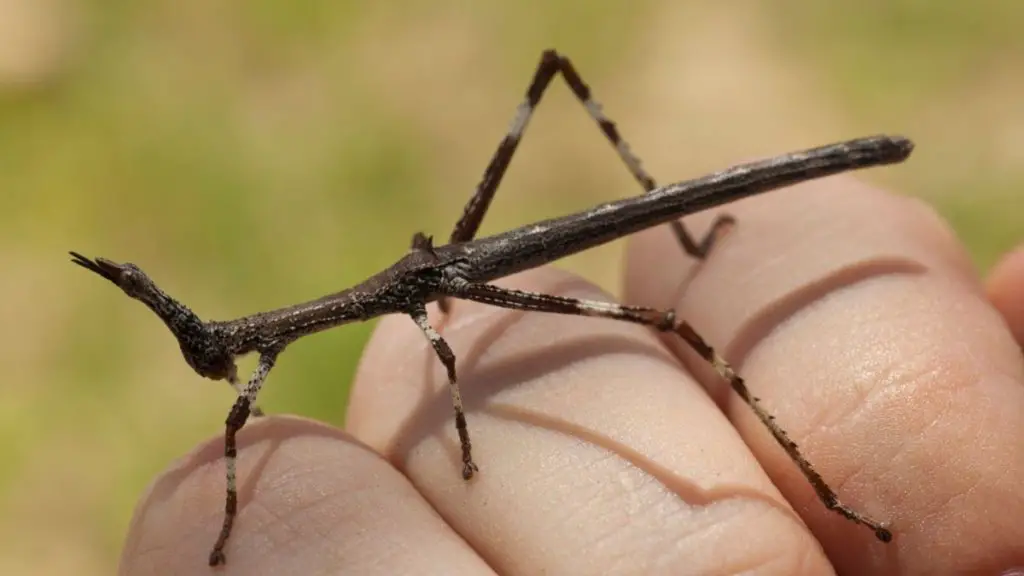
Gentle Giants of the Bug World
How to Handle Them Safely
Stick insects are docile and easygoing, but their fragile bodies demand gentle handling. To pick one up, coax it onto your hand rather than grabbing it. Avoid holding them by their legs, as this can cause injuries or even limb loss.
Common Defense Mechanisms to Watch Out For
Some species have quirky defense mechanisms—like spreading their wings to startle predators or releasing a harmless but stinky odor. Others can even spray mild chemicals. While they’re not dangerous, it’s best to avoid handling them too roughly to prevent these reactions.
Avoiding Injury: Handle with Care
Stick insects are delicate, and rough handling can lead to broken legs or lost limbs. Always support their body when holding them, and never pinch or squeeze. If you spot sharp spines on their legs (a feature of some species), handle with caution to avoid accidental scratches.
Breeding Stick Insects
Stick Insects and Asexual Reproduction
No Partner? No Problem!
Stick insects are nature’s independent powerhouses. Many species can reproduce asexually, meaning females don’t need a male to lay eggs. The eggs from asexual reproduction usually hatch into female clones, making it incredibly easy to grow your stick insect family.
Egg-Laying 101: What to Expect
Female stick insects lay their eggs on the ground, branches, or even beneath leaves. The eggs are seed-like in appearance and surprisingly large—some species hold the Guinness World Record for the largest insect eggs! Depending on the species, a female can lay hundreds, even thousands, of eggs during her lifetime.
Caring for Stick Insect Eggs and Nymphs
Incubation Period: Patience Is Key
Stick insect eggs take time—lots of it. Depending on the species, the eggs may hatch anywhere between 2 and 12 months. Larger species tend to have longer incubation periods. Place the eggs in a moist, well-ventilated container and mist them lightly to maintain humidity.
Raising Nymphs: Baby Steps to Adulthood
When the eggs finally hatch, the tiny nymphs emerge, ready to explore. These miniature versions of adult stick insects need soft, young leaves to feed on. They’ll molt multiple times over several months before reaching their full size. Keep their enclosure clean and spacious, as overcrowding can stress the nymphs.
Recommended Supplies for Your Stick Insects
Get Everything You Need to Keep Them Happy
Here are some must-haves for caring for your stick insects:
- Enclosure
- Heat mat
- Lighting
- Thermometer & Hygrometer
- Twigs and Branches: For climbing, hiding, and molting.
- Sprayer: To maintain humidity and provide water droplets.
- Feeding Supplies: Fresh leaves, a small jug for leaf branches, and sponges for safety.
- Egg Incubator: A moist container to care for eggs until they hatch.
Shop through our recommended links for these items. Not only do you get the best gear for your stick insects, but you also support this site at no extra cost to you!
FAQs and Troubleshooting for Stick Insect Owners
What If My Stick Insect Loses a Limb?
Why It Happens and How to Help
Losing a limb might seem tragic, but stick insects are resilient. Nymphs can regrow lost limbs during their next molt. Unfortunately, adult stick insects don’t have this superpower. To help your pet recover, ensure their enclosure is stress-free, spacious, and clean.
Preventing Injuries: Tips for Happy Insects
Handle your stick insects gently, as their legs are fragile and can break easily. Avoid overcrowding in the enclosure, as bumping into each other can cause injuries. Keep humidity levels consistent, as molting in dry conditions can lead to limb loss.
Dealing with Common Problems
Molting Failures and Solutions
Molting issues often stem from low humidity or insufficient enclosure height. Spray the enclosure daily to maintain moisture, and ensure the tank is tall enough (at least three times the length of the insect) for a successful molt.
The Importance of Cleanliness and Space
A dirty or overcrowded enclosure can lead to stress, disease, and injury. Remove droppings regularly and provide enough space for each stick insect to move freely.

